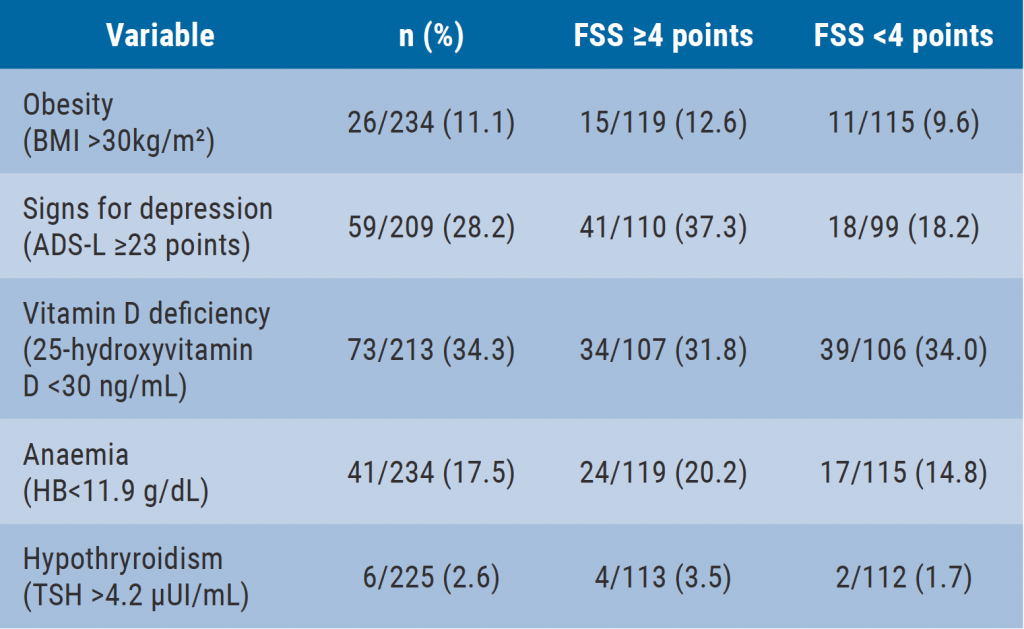Dr Santiago Rodrigues-Manica (Hospital Egas Moniz, Portugal) and colleagues compared the responses to the first and second TNFi and assessed whether the reason for discontinuation of the first TNFi influences the response to the second TNFi. Data was obtained from the Portuguese ReumaPt registry and included axSpA patients who had discontinued their first TNFi and started a second TNFi and had complete data available on Ankylosing Spondylitis Disease Activity Score (ASDAS) and Bath Ankylosing Spondylitis Disease Activity Index (BASDAI) at baseline, 3 months, and 6 months for their first TNFi. They were then followed every 6 months up to 12 years.
The primary outcome was the ASDAS clinically important improvement (ASDAS-CII). Secondary outcomes included ASDAS major important improvement (ASDAS-MI); ASDAS low disease activity; ASDAS inactive disease (ASDAS-ID); and BASDAI 50. The reason for discontinuation of the first TNFi was defined as: primary failure (i.e. ASDAS-CII was not achieved at 3 or 6 months); secondary failure (i.e. ASDAS-CII achieved at 3 or 6 months but lost in ≥1 follow-up visit); adverse events; or other (e.g. pregnancy, surgery). The response to the first TNFi at 3 and 6 months was compared with the response to the second TNFi at the same visits, adjusting for age, gender, and C-reactive protein (CRP). The association between the reason for discontinuation of the first TNFi and response to the second TNFi over time was tested using generalised estimating equations (GEE) models, adjusted for age, gender, and CRP. Included in the study were 193 patients with a mean age of 45 years, a median follow-up on the second TNFi of 1.5 years; 53% were male.
Patients had a lower response to the second TNFi compared with the first TNFi according to the primary outcome (i.e. ASDAS-CII) at 3 months (41% vs 51%, respectively) and 6 months (35% vs 56%, respectively). An association was observed between the reason for discontinuation of the first TNFi and response to the second TNFi as defined by the most stringent outcomes (ASDAS-MI and ASDAS-ID), but not for ASDAS-CII. Compared with patients who discontinued their first TNFi due to primary failure, patients were more likely to achieve ASDAS-ID with the second TNFi when they discontinued their first TNFi due to secondary failure (odds ratio 7.3; 95% CI 1.9-27.7), adverse events (odds ratio 9.1; 95% CI 2.5-33.3), or other reasons (odds ratio 7.7; 95% CI 1.6-37.9).
Dr Rodrigues-Manica concluded that axSpA patients showed a worse response to the second TNFi compared with the first TNFi. Patients with secondary failure to the first TNFi have a better response to the second TNFi compared with those discontinuing the first TNFi due to primary failure, particularly for most stringent outcomes (i.e. ASDAS-MI and ASDAS-ID). Further, patients with secondary failure to the first TNFi seem to benefit from treatment with a second TNFi. These findings will have implications for studies designed towards selection of second-line therapy in the setting where more drugs are becoming available for axSpA.
Posted on
Previous Article
« AxSpA real-life remission rates higher on biologics Next Article
Reduced maintenance dose of certolizumab pegol can be used in axSpA »
« AxSpA real-life remission rates higher on biologics Next Article
Reduced maintenance dose of certolizumab pegol can be used in axSpA »
Table of Contents: EULAR 2020
Featured articles
COVID-19 and inflammatory rheumatic disease: some key issues
Secukinumab monotherapy as efficient as adalimumab
AxSpA real-life remission rates higher on biologics
Olokizumab significantly improves RA features and patient-reported outcomes
Rheumatoid Arthritis
New nanoparticle promising future agent in RA
Olokizumab significantly improves RA features and patient-reported outcomes
Low DAS at 4 months predicts sustained DMARD-free remission
Ankylosing Spondylitis
Reduced maintenance dose of certolizumab pegol can be used in axSpA
Worse response axSpA patients to second TNFi versus first TNFi
AxSpA real-life remission rates higher on biologics
Certolizumab pegol reduces acute anterior uveitis in axial spondyloarthritis
TNF-α inhibitors improve bone mineral density in AS patients
Psoriatic Arthritis
Ixekizumab shows sustained improvements in pain and fatigue at 3 years
Adalimumab added to methotrexate yields better results in PsA than methotrexate escalatio
Upadacitinib provides fast onset of improvement in psoriatic arthritis
Secukinumab monotherapy as efficient as adalimumab
Osteoporosis and Osteoarthritis
Higher mortality risk with tramadol versus NSAIDs for osteoarthritis patients
Hydroxychloroquine not effective in patients with hand osteoarthritis
Positive effect denosumab on fall risk
Systemic Sclerosis and Systemic Lupus Erythematosus
Anifrolumab achieves rapid and durable BICLA-response
Subclinical myocardial involvement progresses in SSc patients
Composite endpoint CRESS for primary Sjögren’s syndrome
COVID-19
COVID-19 and inflammatory rheumatic disease: some key issues
Related Articles
January 14, 2022
Selective IL-23 inhibition: a new option in active PsA

February 4, 2020
Depression closely related to fatigue in SLE patients
February 5, 2021
NSAID users not at higher risk of death related to COVID-19
© 2024 Medicom Medical Publishers. All rights reserved. Terms and Conditions | Privacy Policy
HEAD OFFICE
Laarderhoogtweg 25
1101 EB Amsterdam
The Netherlands
T: +31 85 4012 560
E: publishers@medicom-publishers.com

